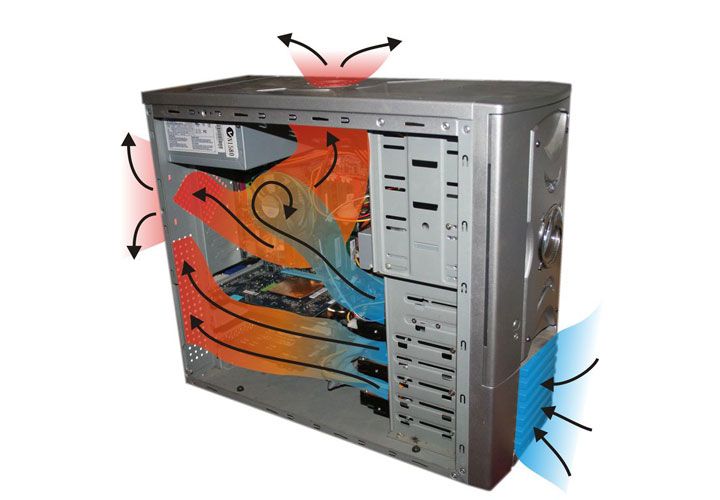
Ever hold your hand next to your computer? Or felt the need to grab an extra layer of clothing when a laptop was burning up your lap? That's because as the computer processes information, when it gets really busy that energy can also be translated into heat. For computer designers and consumers, it's an annoyance. But taken to the scale of the nation's heating problems, it could be a boon.
"What if we could make better use of the heat generated from computation?," asks Project Exergy. "Instead of solving for the most cost effective computation process vs. heat generation, why don’t we look at the most effective heat generation vs. computation process? We call it combined heating and computation and we built a prototype."
Most heat generated from computers is simply wasted. It floats up to the ceiling and eventually escapes the house, running up instead into the atmosphere. While the contribution to global warming is hard to quantify, some reports indicate the contribution is not 0. According to a 2007 Time article, a report from the the U.S. Department of Energy, said 75% of home electricity comes in the form of standby power. That's the juice required to keep your electronics ready to turn on instantly, when you need them. More energy leads to a greater carbon footprint, the article says.
That's about the same time that Exergy founder Lawrence Orsini, who says he has 10 years of experience in commercial energy efficiency, began to wonder about how to harness computer heat. By 2009, he had radiant heating and a ground source heat exchanger in his house in San Francisco.
Three years later came the first prototype build. "A 1.5 kW computer with cooling blocks, a storage tank and piping to a radiator and commode cooler. The prototype provided heat for the 2013 and ’14 winter seasons," Exergy's website said. All done with commercial off-the-shelf hardware.
And now the company wants to go further. An Indiegogo campaign underway right now has already raised 100% of its $10,000 goal -- and has almost two months to raise more. The goal is to further develop "Henry", a computer that both catches and caches any heat made. According to Exergy, the heat Henry creates is enough to keep a 1,000-square-foot apartment warm. That would serve a great deal of the population in North America and overseas. But there's more that needs to be done, the backers say.
"Henry consistently hits the temperatures we need to make domestic hot water, space heating, and power desiccant-driven air conditioning. Built with off-the-shelf parts, he’s running at the extremes of what he can reliably do on a daily basis," Exergy wrote.
"Future generations of 'DareHenry' will be super energy efficient and energy productive by capturing and storing more than 90% of the heat generated by the internal components. DareHenry will also be modular, easy to maintain, and programmed so that we can customize its performance to suit your needs."
In an interview with Medium, Orsini said he is hoping that the project can spark a future where electricity no longer needs to be transported such long distances, home to home. The company even hopes that future generations of "DareHenry" can replace the need that we find right now to have multiple devices in our lives. Why have a computer, a tablet and a smartphone when one device could serve the purpose of all three, they ask.
The company plans a second prototype in 2016 and is pursuing research and development grants to go in that direction.
Top image: Wikimedia Commons








